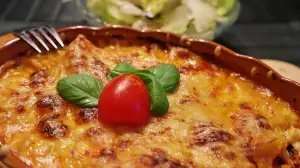Master the Art of Chicken Korma: Elevate Your Indian Curry Game with Our Chef's Recipe

Chicken Korma is a popular Indian curry dish known for its rich, creamy sauce and tender chicken. It is a dish that has been enjoyed for centuries and is loved for its delicate flavors and aromatic spices. Whether you are a fan of Indian cuisine or looking to explore new flavors, Chicken Korma is a must-try dish that will elevate your culinary skills. In this article, we will delve into the history, ingredients, recipe, and variations of Chicken Korma, as well as provide tips and tricks to help you master this exquisite dish in your own kitchen. Get ready to embark on a flavorful journey with our Chef's recipe for Chicken Korma!
History and Origins of Chicken Korma
Chicken Korma is a classic Indian dish that has a rich history and fascinating origins. The word "korma" is derived from the Urdu language, which means "braised" or "cooked slowly over low heat." This cooking technique originated in the Mughal era of India, during the 16th century.
The Mughals were known for their love of rich and flavorful food, and they brought with them a culinary tradition that combined Persian and Indian influences. Chicken Korma was one such dish that emerged from this fusion of flavors.
Originally, Korma was made with lamb or beef, but over time, chicken became a popular alternative due to its versatility and availability. The dish was traditionally prepared by marinating the meat in yogurt and spices before slow-cooking it in a creamy sauce made with onions, garlic, ginger, and aromatic spices like cardamom, cinnamon, and cloves.
Chicken Korma quickly gained popularity among the royal courts of India and eventually spread to other parts of the country. Today, it is enjoyed by people all over the world as a beloved Indian curry dish.
The unique blend of spices used in Chicken Korma reflects the diverse cultural influences on Indian cuisine throughout history. It showcases the delicate balance between flavors like sweet, savory, tangy, and spicy. The slow-cooking process allows the flavors to meld together beautifully, resulting in a dish that is both comforting and indulgent.
Understanding the history and origins of Chicken Korma adds an extra layer of appreciation when preparing this delicious curry at home. It connects us to centuries-old traditions while allowing us to explore new flavors and techniques in our own kitchens.
Ingredients for Chicken Korma
The Ingredients for Chicken Korma are essential to achieving the rich and flavorful dish. Here's what you'll need:
1. Chicken: Use boneless, skinless chicken thighs or breasts.
2. Yogurt: This adds creaminess and tanginess to the sauce.
3. Onions: Finely chopped onions form the base of the curry.
4. Garlic and Ginger: These aromatic ingredients enhance the flavors.
5. Spices: Ground turmeric, cumin, coriander, cardamom, cinnamon, and cloves create the signature taste of Korma.
6. Nuts: Cashews or almonds are blended into a paste to thicken and enrich the sauce.
7. Ghee or Oil: Used for cooking the chicken and sautéing the spices.
8. Fresh Cream: Optional but adds richness to the sauce.
9. Saffron (optional): Adds a beautiful golden color and subtle flavor.
These ingredients come together to create a luscious and aromatic Chicken Korma that will impress your guests or satisfy your cravings for restaurant-quality Indian cuisine at home.
Step-by-Step Recipe for Chicken Korma
1. Heat oil in a large pan over medium heat. Add onions and cook until golden brown.
2. Add ginger-garlic paste and cook for another minute.
3. Add chicken pieces and cook until they are lightly browned on all sides.
4. In a separate bowl, mix yogurt, cashew paste, and spices like turmeric, coriander powder, cumin powder, and garam masala.
5. Pour the yogurt mixture into the pan with chicken and stir well to combine.
6. Reduce heat to low, cover the pan, and let it simmer for about 20 minutes or until the chicken is cooked through.
7. In a small pan, heat ghee and add whole spices like cinnamon stick, cardamom pods, cloves, and bay leaves.
8. Once the spices release their aroma, add them to the chicken mixture and stir well.
9. Finally, add cream or coconut milk to give a creamy texture to the curry.
10. Simmer for another 5 minutes until all flavors are well combined.
11. Garnish with fresh cilantro leaves before serving.
Now you have a delicious homemade Chicken Korma ready to be enjoyed!
Tips and Tricks for Making the Perfect Chicken Korma
To make the perfect Chicken Korma, here are some tips and tricks to keep in mind:
1. Marinate the chicken: To infuse the flavors, marinate the chicken in yogurt, ginger-garlic paste, and spices for at least 30 minutes or overnight.
2. Use whole spices: Toast whole spices like cardamom pods, cloves, and cinnamon sticks before grinding them. This enhances their flavor and aroma.
3. Slow-cook on low heat: Allow the Korma to simmer on low heat for a longer duration. This helps in developing rich flavors and ensures tender chicken.
4. Add nuts for creaminess: Cashews or almonds can be soaked and ground into a paste to give the Korma a creamy texture without using heavy cream.
5. Balance the flavors: Adjust the amount of spices according to your preference. Taste as you go and add more salt, chili powder, or garam masala if needed.
6. Garnish with fried onions: Thinly slice onions and fry them until golden brown. Sprinkle these crispy onions on top of the Korma for added texture and flavor.
By following these tips and tricks, you'll be able to create a restaurant-quality Chicken Korma that is bursting with authentic Indian flavors.
Serving Suggestions for Chicken Korma
When it comes to serving Chicken Korma, there are several options that can elevate your dining experience. The creamy and aromatic curry pairs perfectly with fluffy basmati rice or naan bread. You can also serve it with roti or paratha for a more traditional touch. To add some freshness and crunch, consider serving a side of cucumber raita or a tangy mango chutney. For a complete meal, you can include some vegetable dishes like saag paneer or aloo gobi. Don't forget to garnish your Chicken Korma with fresh cilantro leaves and a squeeze of lime for an extra burst of flavor.
Variations and Adaptations of Chicken Korma
While the traditional recipe for Chicken Korma is undeniably delicious, there are several variations and adaptations that you can try to add your own twist to this classic Indian dish. Here are a few ideas:
1. Vegetable Korma: If you prefer a vegetarian version, simply replace the chicken with a medley of your favorite vegetables such as carrots, peas, potatoes, and cauliflower. The creamy sauce will still be just as flavorful.
2. Coconut Milk Korma: For a slightly sweeter and tropical twist, substitute some or all of the heavy cream with coconut milk. This will give the dish a rich and creamy texture with a hint of coconut flavor.
3. Spicy Korma: If you like your curries to have a kick, add some extra heat to your Chicken Korma by increasing the amount of chili powder or adding chopped green chilies. Be sure to adjust the spiciness according to your taste preferences.
4. Nutty Korma: To enhance the nutty flavors in the dish, consider adding crushed cashews or almonds during the cooking process. This will not only add a delightful crunch but also provide additional richness to the sauce.
5. Yogurt-based Korma: Instead of using heavy cream, you can opt for a lighter version by replacing it with yogurt. This will result in a tangier and slightly healthier Chicken Korma without compromising on taste.
Feel free to experiment with these variations or even create your own unique adaptation of Chicken Korma. The possibilities are endless when it comes to customizing this versatile dish to suit your personal preferences and dietary needs.
Health Benefits of Chicken Korma
Chicken Korma not only satisfies your taste buds but also offers several health benefits. Firstly, chicken is a lean source of protein, essential for muscle growth and repair. It also contains important vitamins and minerals like vitamin B6, which supports brain function, and selenium, an antioxidant that boosts immunity.
Additionally, the spices used in Chicken Korma such as turmeric, ginger, and garlic have anti-inflammatory properties. Turmeric, in particular, contains curcumin, known for its potential to reduce the risk of chronic diseases like heart disease and cancer.
Furthermore, the use of yogurt in the sauce provides probiotics that promote gut health. The combination of spices in Chicken Korma can aid digestion and improve metabolism.
However, it's important to note that the overall healthiness of Chicken Korma depends on the cooking method and portion size. Opting for lean cuts of chicken and using minimal oil can make this dish even healthier.
By enjoying Chicken Korma at home with fresh ingredients and mindful preparation techniques, you can indulge in a delicious meal while reaping its nutritional benefits.
In conclusion, mastering the art of Chicken Korma allows you to enjoy restaurant-quality Indian curry in the comfort of your own home. By understanding the history and origins of this dish, gathering the right ingredients, and following our step-by-step recipe, you can create a flavorful and aromatic Chicken Korma that rivals any restaurant version. With some practice and the help of our tips and tricks, you'll be able to perfect your technique and create a dish that will impress your family and friends. So why not elevate your Indian curry game today and indulge in the deliciousness of Chicken Korma?
Published: 24. 11. 2023
Category: Food



